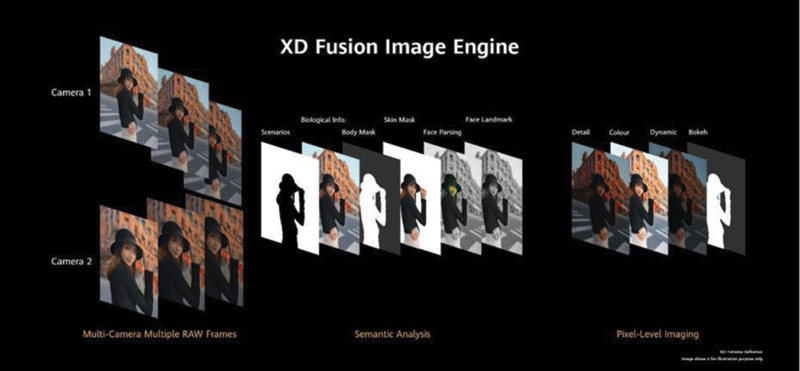KUWAIT: Throughout its short history, the visual art we know today as 'motion picture' has had many names - films, movies, moving pictures and so on. In essence, films comprise many frames of still images, played sequentially at a relatively high rate to 'fool' our eyes into believing the objects in frame are in motion. For a better part of their existence, motion pictures were captured on actual, physical films, and for a long time, the movie industry had used 35mm films as the standard. As technology advanced and the industry gradually transitioned towards digital production, the 35mm standard was kept, becoming the size of camera sensors that we categorize as 'full frame sensors'.
From photojournalism to online video content production, full frame DSLR and mirrorless cameras are perhaps the most commonly used cameras for professional work today. Compared to more specialized equipment, full frame cameras offer very usable image quality and incredible versatility, especially when we take price into consideration. But in recent years, a particular category of products is quickly closing the gap between professional gear and consumer electronics.
You've guessed it - smartphones. Every year, smartphone manufacturers - which are some of the most technologically advanced and resourceful players - put out new flagship devices that push the envelope of what's possible in a pocketable camera. We've come to a point where some professionals are integrating smartphones into their workflows as backup cameras. However, when the quality of images that a camera delivers is strongly correlated with the size of its camera, how can smartphones, which usually feature much smaller sensors, compare with their much bulkier cousins? Here's the short answer: computational photography.
Today, every major smartphone company has its own software solutions for enhancing image quality. Each solution has its niche, but with the recent HUAWEI Mate 40 Pro, Huawei took its solution to the next level with XD Fusion HDR Video, enabling users to achieve the same outstanding quality on their videos as they do when taking photos.
What is XD fusion?
Before we talk about the XD Fusion HDR Video feature, let's quickly recap what the XD Fusion Engine is. In short, it is a computational photography solution that fuses and processes multiple frames from the imaging hardware into a high quality output. It exemplifies Huawei's expertise in mobile imaging, which spans hardware and software.
The solution involves a pipeline that processes input in three phases. In the initial stage, multiple cameras collect high-fidelity RAW frames for visual information including exposure and depth. These frames are processed through high-level semantic recognition to deconstruct them into Scenarios, Biological Information, Body Mask, Skin Mask, Face Parsing and Face Landmark layers. Before outputting, the solution conducts pixel-level imaging to enhance bokeh, dynamic range, detail and colour of the image, resulting in the final 'extreme definition' photo.
XD fusion HDR video
As mentioned above, motion pictures and videos are actually made of a series of images. What this means is if a Huawei device is to support the XD Fusion pipeline for video capture - that is, to apply bracketing and other processes - it would need an exponentially greater processing power. For example, a three-second 30fps video clip has 90 frames in total, meaning the pipeline has to process 90 times the information compared to generating a still output.
With HUAWEI Mate 40 Pro, Huawei expands the functionality of the XD Fusion Engine to benefit videography as well. The flagship device can process frames at a much higher rate, allowing it to employ the XD Fusion Engine pipeline to process 4K HDR video capture in real time.
With XD Fusion HDR Video, HUAWEI Mate 40 Pro can help you capture absolutely spectacular videos whenever inspiration strikes. But if you're looking to add a bit more movie magic to your piece, don't miss out on the many amazing third-party apps available on AppGallery. As one of the top three app marketplaces worldwide, Huawei's platform offers users with a wide range of global popular apps, games and services - video editing apps included.
There's also Petal Search, Huawei's official search engine, that complements AppGallery with its app search. Now available in over 170 countries and regions, and over 50 languages, Petal Search quickly and conveniently finds users their favourite apps, news, videos, images, shopping, travel, flights, local businesses, and more. Huawei users can easily download the most popular apps on Petal Search.





